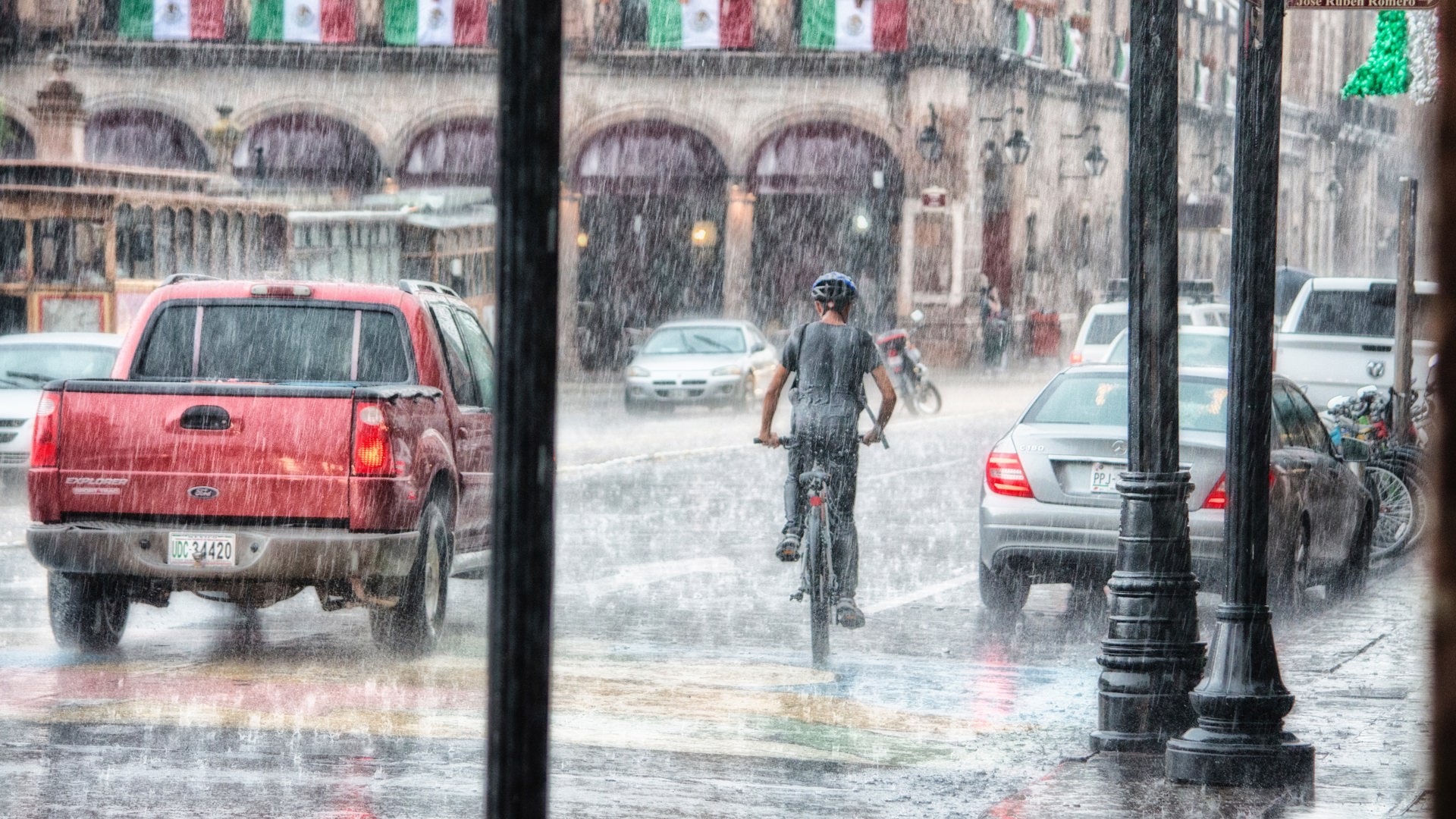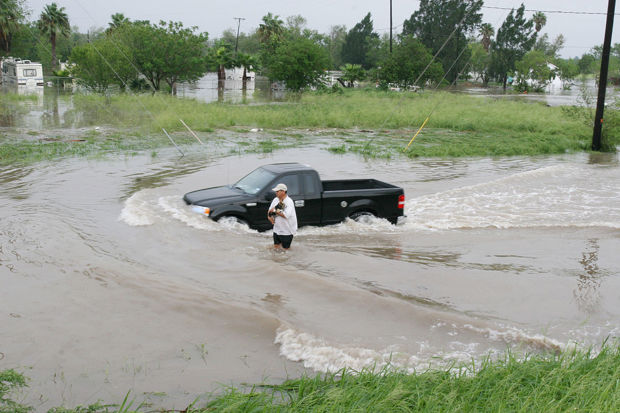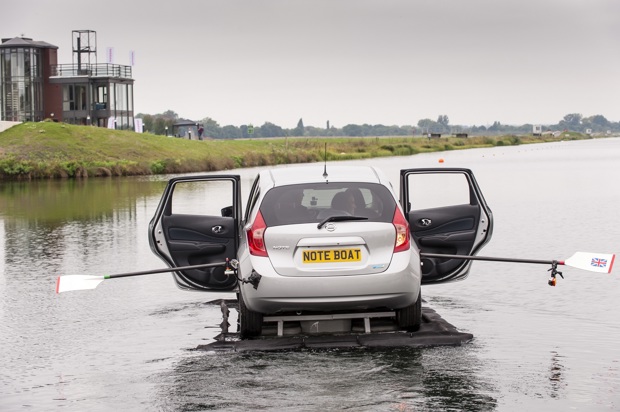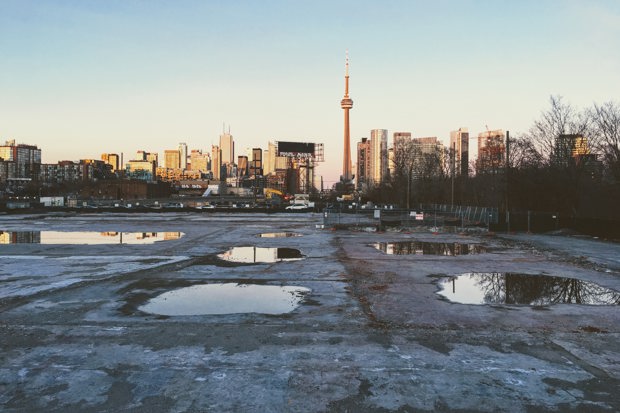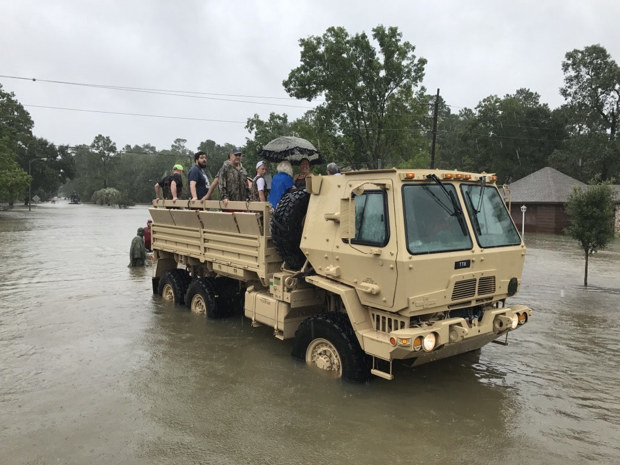It's been raining in Toronto. Quite hard. So much that roads and underpasses around the city are flooding. That means that if you're driving around the city that there's a chance you're going to run into a flooded road. This next bit is important.
Don't drive over a flooded road.
We'll repeat that one: Don't drive your car over a flooded road.
And that doesn't just go for Toronto roads, those words of wisdom apply to flooded roads just about everywhere. Here's what can happen if you decide that you are going to drive over that road anyway.
What Lies Beneath
There could be a sinkhole hiding under there. When there is a lot of water on the road, there is also a lot of water under the road. If that water is flowing, and there's a good chance that it is, then the rocks and gravel and dirt that support the pavement could have been washed away.
That means that what looks like a secure piece of damp pavement could actually be a deep pit just waiting for your car to come along and fall in.
Cars Don't Float…
Which leads to the next reason. Unless there's something telling you just how deep the water is, it can be nearly impossible to tell just how deep that water is, especially at night. It could be just a few millimetres deep, but it could be up to the roof of the car. Driving into water that is deeper than you think can turn into a quick trip for you and your beloved automobile to the bottom of a hidden lake. That's because cars don't float. Except for when they do.
Except When They Do
With modern weather-sealing and big air-filled tires, it's possible for your car or truck to float. Once the water level gets about midway up the tire, your car can have just enough buoyancy to start to float in that water you didn't realize was quite so deep. But it won't float for very long. How long, you ask. Well, your car will probably float for just long enough for the current of that floodwater to push it downstream.
So instead of filling up with water and sitting on the now-submerged roadway, you're instead starting to quickly sink in the real flow of water. That could be a ditch, a creek, a river, or even a harbour. And when that happens, an embarrassing walk back to dry land quickly becomes a much more dangerous and serious situation.
Engines Suck, A Lot
Engines produce an impressive amount of vacuum. That is, they can suck things in – very powerfully. Notice that we didn't say how powerfully they can suck air in. That's because the engine doesn't care, it just wants to be fed. It's why we have air filters, to keep large objects out.
A modern engine can pull water up a six-metre-long straw. So if standing or splashing water gets near the engine intake, it's going into your engine. Just a few hundred millilitres of liquid water can be enough to hydrolock your engine. That means expensive repairs and a walk back to shore.
Computers Don't Surf
If that water doesn't get in your engine, it is still probably going to get inside the vehicle. That's because cars and trucks aren't perfectly sealed. They aren't designed to be. Air comes in and out through lots of places around the vehicle. Many of those are low to the ground.
Automotive carpet is backed with big soft foam pads. Those pads suck up lots of water. Which is a problem, because automakers like to put computers under that carpet. On the floor of the vehicle, under the seat, they're protected from most forms of damage. But they're vulnerable to water. Replacing the computers that control your airbags and run your engine is not going to be cheap, and the corrosion in the wiring harnesses can cause issues for the rest of the life of the vehicle's days.
Growing Concerns
Even if your computers survive, your nose might not. The carpets will hold that water. For months. And that's the voice of experience and leaky windows talking. We're talking multiple litres of water under your feet without you even knowing. That can end in two ways.
The first one lets you follow your nose. Flood water is not clean water. It started as rain, but now it's run through ditches, yards, sewers, dumpsters, and roadways. It is usually filthy and can be full of bacteria. Add that dirty water to your carpet along with some heat and now your car smells. And mould and bacteria can grow and flourish within the dark, poorly ventilated confines of your vehicle. Ripping out an entire interior to clean out mouldy floorboard water is not going to be fun.
Rust Never Sleeps
If you're lucky enough that the water doesn't turn your floorboards into a swamp, there's a second problem. Rust. The water will help eat away at the floor of your car from the inside out. You won't notice it until one day you start to do the Fred Flintstone on the way home. At that point, it's too late for a cost-effective fix. You're either in for a big welding bill or a new vehicle. But hey, we can help you find that new or pre-owned vehicle.
Finding Your Bearings
Even if water doesn't make it into the engine or into the passenger compartment, deep water can cause damage. Suspension parts like shocks, wheel bearings, tie rods, and ball joints are all designed to be protected from water splashing. Otherwise, you'd be replacing them constantly. But they aren't designed to be submerged.
Your ball joint and CV joint boots can fill with water and have the grease flushed out. That can mean premature rusting and failure down the road. Electronics for the brakes, like ABS sensors, can also be damaged, which again leads to expensive repairs. If your CV joint fails a year after the flood, you might just blame wear and tear. But it could have been a direct result of that water.
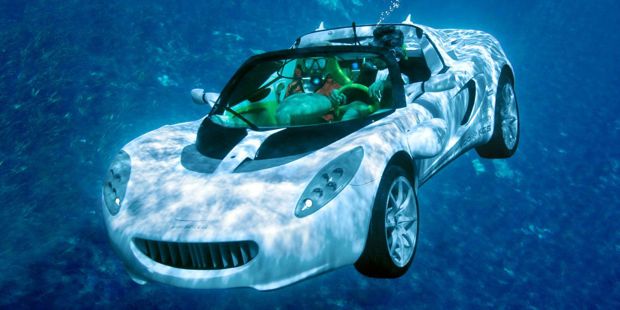
Hidden Dangers
You could drown. Yes, really. We've already said your car could sink. Or it could float away. And that's bad for your car. But it's bad for you, too. You could become trapped inside the vehicle. You could get washed away while trying to walk or swim to shore. In a flood, drain covers and manhole covers can move out of place. So you can be walking in water that's not that deep but then suddenly fall into a hole and get trapped in the sewer.
The Internet Never Forgets
So let's say you get your car or truck stuck in the water. And you manage to escape safely. Well, it's 2018. That means somebody, somewhere, caught your mishap on camera. And they're going to post it to Twitter. Or Facebook, Instagram, YouTube, or even the news. When they do, we're going to make fun of you. Hey everybody, look at that genius who got their car stuck under an overpass! It doesn't matter how you got in there, the internet (or neighbours or friends or family) will remember – forever.
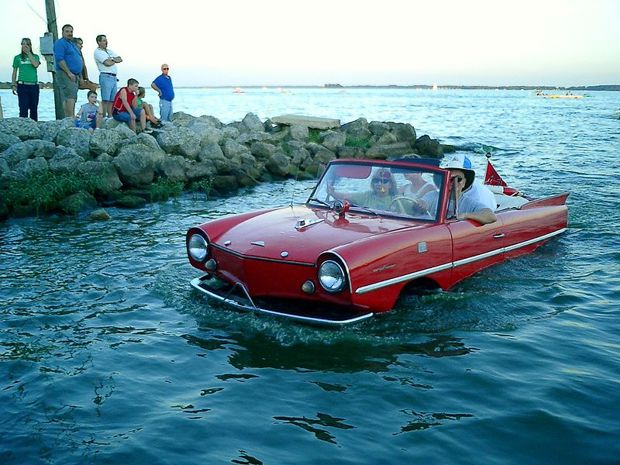
So whatever the reason, keep your car or truck out of deep water. And before you say you have a Jeep with a snorkel or a Land Rover with a Water Fording System, that's fine. Maybe the vehicle won't fill up with water. But all of the rest of the reasons still apply. And if you want to caulk your wagon and risk it anyway, that's up to you. But don't say we didn't warn you. Unless you have an Amphicar. Then you can feel free to drive through whatever water you want.
